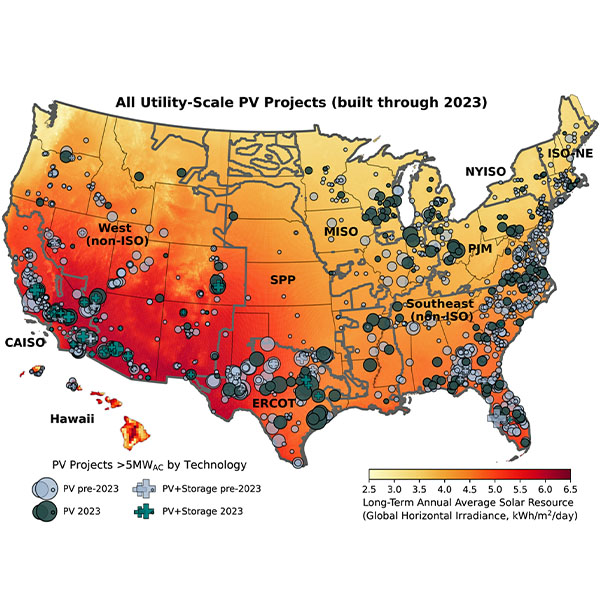Lawrence Berkeley National Laboratory (LBNL)
California’s floating offshore wind industry is getting a boost from $30 million in research and development funds from the state Energy Commission’s EPIC program.
A total of 18.5 GWAC of large-scale solar was brought online last year, bringing total installed capacity to 80.2 GWAC in 47 states.
Hybrid power plants, especially projects combining solar and storage, represent a growing amount of new generation online and in interconnection queues across the U.S., signaling a shift in how renewable power can be integrated into electric power markets, according to a new report from the Lawrence Berkeley National Laboratory.
Lawrence Berkeley National Laboratory has released the latest iteration of its “Tracking the Sun” report, which looks into the 3.7 million distributed solar systems installed through the end of 2023.
A new report finds that the percentage of renewable energy generation additions associated with renewables portfolio standards has declined since the start of this century as development increased.
Industry leaders, experts, policymakers and regulators gathered near the nation’s capital to discuss how recent FERC orders will affect regional transmission planning, cost allocation, permitting and other issues.
Two new reports examine the profusion of local and state regulations affecting renewable energy development.
DOE initiatives aimed at expanding EV charging networks have become more urgent as the November election looms and growth in EV sales has slowed.
A new Berkeley Lab report finds that a combination of aggressive demand and supply side measures could slash greenhouse gas emissions in the building sector 91% below 2005 levels by 2050.
Interconnection requests across the U.S. shot up by 30% in 2023, with close to 2,600 GW of solar, wind and storage waiting to land a spot on the grid.
Want more? Advanced Search










